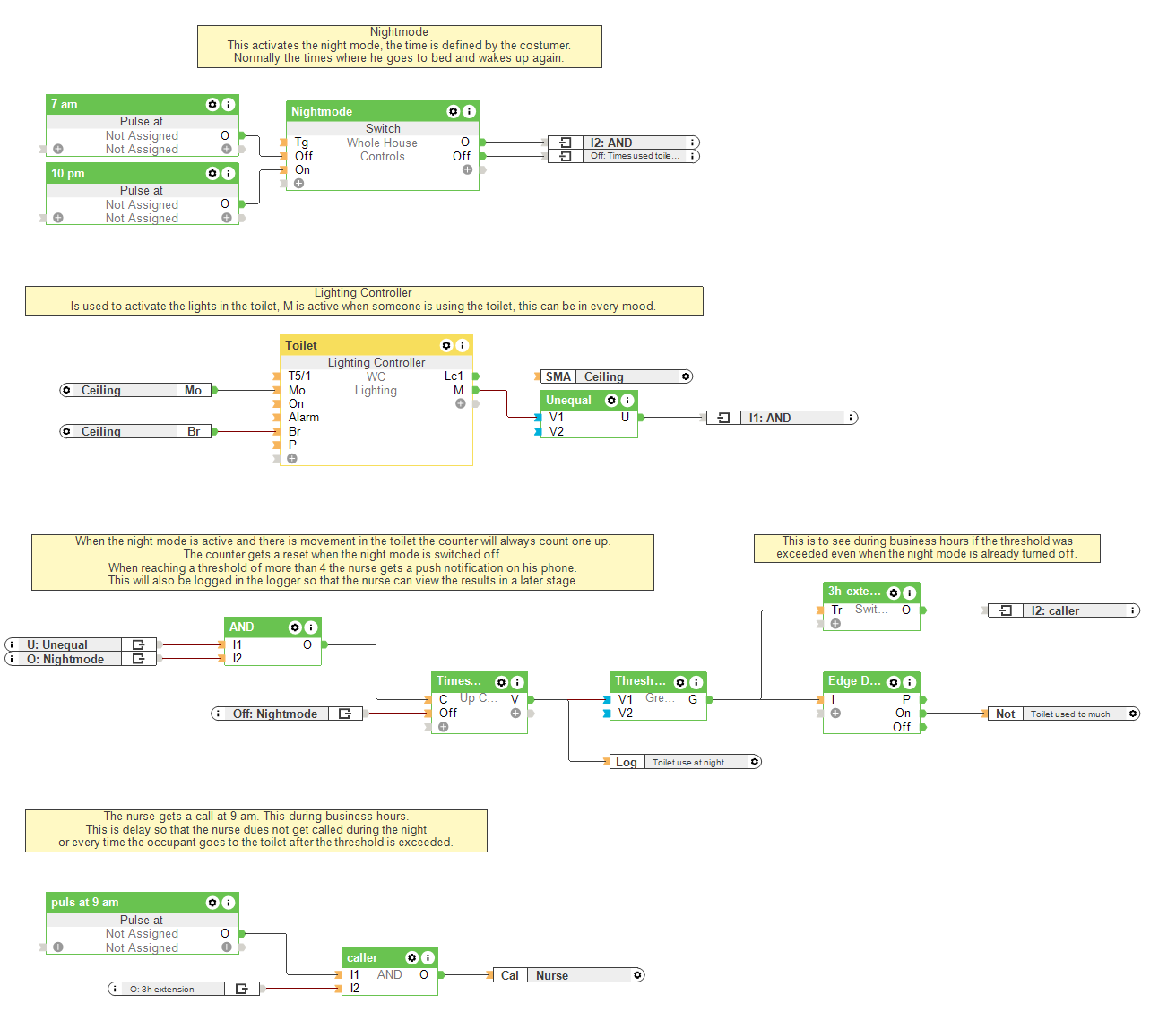Brief: I need a system for automatic behaviour monitoring in assisted living.
In certain situations it is very useful to have insight into the lifestyle and behaviour of senior citizens without having to carry out intrusive monitoring, which can feel like an individual’s freedom is being taken away. That said, behaviour monitoring in assisted living environments is especially important and recognising changes in behaviour or lifestyle in these settings can provide indications of potential illnesses.
An example of this would be the increased use of the bathroom. With the knowledge of these behavioural changes, carers can offer help or seek to talk. If the behaviour of senior citizens changes, for example, by going to the toilet 5 to 6 times during the night, the nursing staff can be discretely informed about this.
In this way, it is possible to gain some insight into the behaviour pattern of seniors without having to personally control and monitor them in their own homes. This way you are not relying on the elderly person in question to report their own changes in behaviour.
In this Use Case, we would like to show you how to implement behaviour monitoring in assisted living in order to be able to react early if necessary.
Solution: Using Loxone for Ambient Assisted Living (AAL) behaviour monitoring.
One of the most used Loxone products in terms of detecting unusual behaviour patterns of seniors is the Presence sensor. With the Presence Sensor, different situations can be detected. In this example, we have an elderly resident who often has to go to the toilet at night. The probability that the resident will tell a carer/family member this is rather low. For the carer, however, it could be very important information.
Threshold values are used to be able to observe specific behaviour patterns. These can be set individually per person or apartment. For example, a threshold value of four can be set for an elderly resident who normally goes to the toilet once or twice a night. If the Presence Sensor in the toilet detects more than four movements during the night, the Miniserver logs this. In addition, the carer is informed via a push notification. The carer can use this information to talk to the resident to help him or her.
Hardware:
Configuration:
Download the sample file:
Lifestyle Monitoring for Assisted Living
The advantages of behaviour monitoring in assisted living environments.
Behaviour monitoring provides insights into the slow change of behaviour in everyday life, especially for people who live alone. With the use of the Presence Sensor, carers and family members automatically receive information should there be unusual behaviour patterns. The current situation can thus be better assessed by carers and family members. Changes in everyday life can be detected, without the need for cameras. Picking up these changes in behaviour could even help spot the early signs of certain diseases.
The goal of behaviour monitoring in assisted living is to use technology to improve the quality of life of elderly people. At the same time, they should be enabled to live an independent life, even if they are mentally or physically impaired. With Loxone technology, the wishes and demands of the residents and carers can be taken into account and individually adapted for each resident. The system can be expanded with additional functions at any time.

